The Narrative Systems of BioShock Infinite

BioShock Infinite (2013)
Developer: Irrational Games
Producer: 2K Games
When the first entry in the BioShock series arrived in the world in 2007, it was heralded as remarkable progress within the medium of video games. Some even said that “it may have been gaming’s first work of art.” ["First?" Wince.] The reason for it’s critical adoration was its attention to detail within immense, wildly imaginative world-building that created a remarkable sense of place for the player. It pioneered video game storytelling techniques that would forever reverberate through the industry.
All three games in the BioShock series were created by Irrational Games under the creative leadership of Ken Levine. BioShock Infinite was the most ambitious of the three, taking a team of 200 people some five years to create, much of that time spent in iteration. As of 2015 the series had sold 25 million copies, with nearly half of those copies being BioShock Infinite alone.
BioShock 1-2 took place in the fantastic, gruesome underwater world of Rapture, while BioShock Infinite, the third in the series, brings players in the opposite direction: to the seemingly pristine nebular shores of Columbia. The player inhabits Booker DeWitt, a former Pinkerton detective who is compelled by a mysterious source to travel to Columbia to rescue Elizabeth, a young woman who is being held in captivity. Along the way, they get swept up and forced to participate in a civil war, all the while struggling to control a wild mesh of parallel timelines and trying to decipher what real events in their past led them to their current predicaments. And if that last sentence confused you at all - just wait until you play the game :)
My own experience with BioShock Infinite was in line with the critics: I found the world-building to be complete, fascinating, and thoroughly transporting. So how did they do it?
How did BioShock Infinite create such a sense of place for the player?
I’m going to do something a little different for this deconstruction. Instead of attempting to deconstruct the entire, massive game, I’m going to dive deep into the narrative delivery systems. What I surely am not going to do is attempt to explain what exactly the story all means; if you’re interested in that, you’re better off perusing YouTube.
To begin, I played through the game and then brainstormed the following chart of narrative devices while revisiting the playthrough online:

I split the storytelling up into two parts: “world building/lore,” and the “character story.” The latter I was also considering as the “player story,” or the story that the player will experience for themselves firsthand. I’ll go through each device here with an example.
Character Story
Situating the Character within the World
Collecting/buying objects in the world: Allowing the player to interact with objects within the environment adds to the sense of being present within the world. Here, the player enters a grocery store and can take food items off shelf. A collection basket at the front of the store asks the player to pay for their goods, and the player can choose to contribute or not, or even to steal the coins out of the basket.
3D cutscenes the player can move around in: This is a big one. Most games will switch to a cinematic cutscene when a precise action sequence is needed to propel the story forward. Switching to a third-person view and removing the control of the player distances the player from the player-character ("PC"). BioShock doesn’t do that.
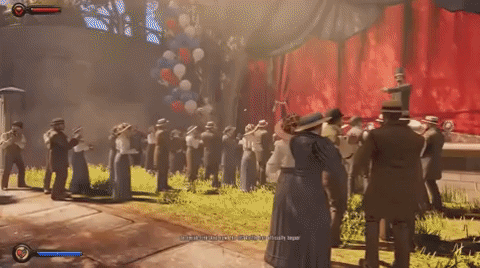
As one reviewer puts it in a ten-year roundtable retrospective on the game:
“There are no cutscenes, no switching to third person, no agency-limiting tropes like mounted gun sections. The few times you're not free to move are generally when your character physically wouldn't be. Maintaining that respect for the player, even when you need to tell a character-driven story, is a rare and wonderful thing."
Player-character (PC)’s running narrative: Booker is continuously commenting on the gameworld through an stream-of-consciousness voiceover. This builds both the PC’s personality and his relationship to the world.
Plot and Backstory

Relationship to Non-Playable-Character (NPC): Booker is given a partner - Elizabeth - a third of the way through the game. Elizabeth is not only a central figure within the story of the world, she is also a helper, a guide, and a convenient conversationalist. Observing the relationship between Elizabeth and Booker grow gives us more information about Booker’s character.
Flash-backs/forwards/sideways/…? : The game doesn’t limit itself to a linear retelling of the plot. Jumps in time give the player an opportunity to learn more about Booker and his backstory.
Concrete objectives given by a mysterious entity: who, in this case, is also mystical, vaguely ominous, and completely unknown for most (if not all) of the game. The player is given a very clear objective within the first few minutes of the game (bring back the girl!) with a threat of danger if they do not complete it.

The game always tells the player the next step, giving them clear directions on how to act to progress the story. This means that the player can always feel assured of the story they are enacting.
World Building and Lore
Hidden Optional Backstory
A weirdly ubiquitous device found in adventure games of all types, optional hidden story-transmitters are scattered throughout the world. Players can collect them all, ignore them entirely, or accomplish something in between.
Audio logs: Each audio log is a supposed recording from a citizen of Columbia. Each story adds to the fictional landscape.
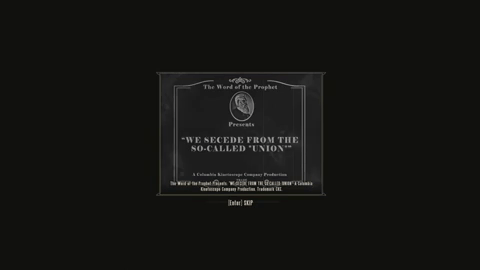
Short videos: Much like the audio logs, short-form "kinetoscope" videos share snippets of the history and politics of Columbia through the perspective of a paid-for-by-the-city propaganda machine.
Theatrical Storytelling
Diegetic title cards: Imagine the scrolling text at the beginning of Star Wars. Now imagine that text living diegetically within the story world:
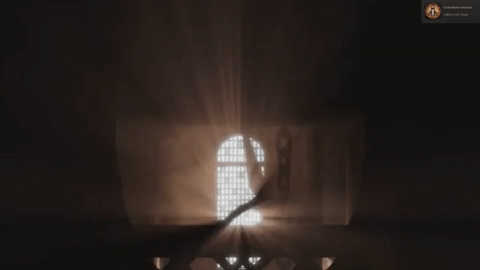
BioShock includes these “built-in” title cards often within the game. The player will see them when riding an elevator, or passing through an exhibit hall. These title card segments deliver a lot of story and context without breaking the fourth wall. There is also an added layer of complexity to keeping the text in-world, as it begs the question: who wrote these messages, and what is the intent behind their placement?
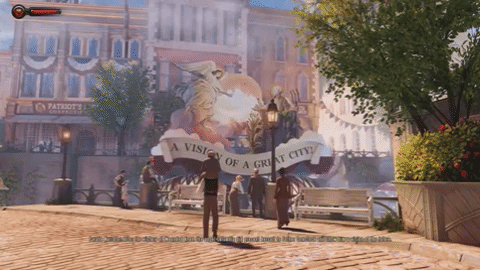
Carefully orchestrated events make the world “come alive”: as the player walks through the streets of Columbia, a parade passes by, or a band floats to street level and begins covering a Beatles song. These events, while subtly triggered by the player, make the world feel like it is alive, not simply waiting around for the player to interact with it.
In the previous two instances, the events triggered delivered interesting backstory and flavor to the world, but were not communicating any vital information. The player, then, didn’t need to pay attention to them. The Beatles cover especially was completely skippable - the player could walk right past it and continue the game if they liked.
Sometimes the player did need to pay attention, like in this clip:
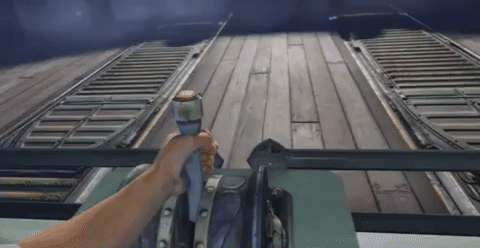
In these cases, there is very little space for the player to move to, and nothing else for the player to see. In this way, the game allows the player to keep their agency but presents attention to the story-giving device as being the most attractive option. In other words, the player doesn’t have to stick around to watch it, but they likely will.

In both of these examples the player has to pull a lever to start the animation (it's cut off in the second gif here, but you can spot it in the bottom center of the screen). This ensures that the PC is placed exactly where the game creator wanted them to be for the beginning of the storytelling.
Environment
The environment! It's the first thing that people likely notice when playing the game. That is because it so detailed, so lush, so complex that it begs interest from the player. In that same ten year roundtable retrospective:
It was probably the first game to really take advantage of that technological leap and the new level of visual detail high-definition graphics allowed. Suddenly, we were able to recognize the little nuances that developers need to tell the story of a place and make it feel real—the material of a building’s walls, the snarling face of a timeworn bronze statue, the era-appropriate graphic design of the advertisements. The creation of these spaces and the stories behind them was an achievement on its own, and, for some people, just being transported there was enough.
Environmental storytelling: There is a lot of story to be gained by simply walking around the levels and looking closely. Take a look at the next screenshot: what kind of story - both literal and metaphorical - can be gleaned by this single tableau?

Precise, detailed, stylized aesthetic: Everything in the game contributes to a very specific fantasy realm based on recognizable influences. This means the architecture, the signage, the costuming, the Continental accent of the NPCS - everything - adds up to a unified whole that sells us on the world.
Weather: A heavy-handed technique that mirrors the emotional tone of the story within the highly aestheticized environment. Can you guess which one of these images is from "happy" Columbia and which one is from "discordant"?

Overheard NPC dialogue: Like the audio logs, the overheard dialogue offers seemingly-random glimpses into the lives of Columbia’s inhabitants, giving further texture to the gameworld.
Conclusion
It is clear by the end of this study that many narrative devices went into creating the lush, transporting world of BioShock Infinite. I'm looking forward to using this post as a checklist for future video gameworld building of my own.
Some distilled takeaways:
Make the player story clear immediately, and keep it clear. It is all well and good to have a rich and juicy game-world, but if the player/PC story isn’t as rich and juicy, the player is apt to become lost, frustrated, or simply apathetic.
There are ways to have a cinematic impact without reminding the player of the artifice of the game by taking away their control. As I discussed in the “theatrical storytelling” section, there are ways to limit player movement without removing it entirely.
A bold, stylized aesthetic consistently rendered will stand out to players.
What do you think?
Do you agree or disagree that BioShock Infinite created a transporting game-world? Will this list help you in the future? Were there any devices I forgot?


